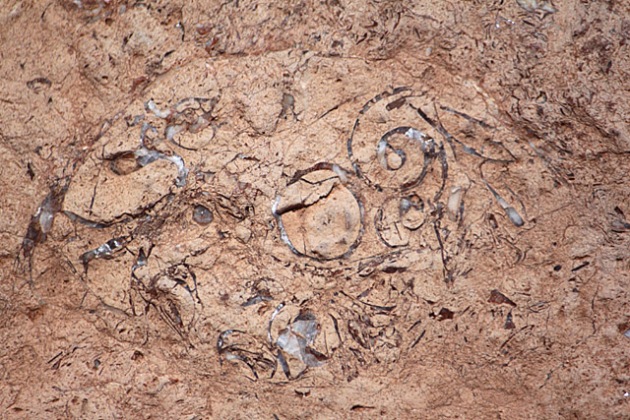Sorry, I couldn’t resist the headline. But it’s okay – I didn’t hurt myself. I just slipped on some lava. Yesterday I took the day off and went to a place called Grand Falls, so I thought I’d share it with you.
Arizona is stuffed full of gems that they hardly ever bother to tell you about. I guess if you have the Grand Canyon in your backyard it’s kind of embarrassing to admit to all the other wonders of the world that you have tucked away in corners. Anyway, this little marvel is actually in the Navaho Nation, some miles down an unsignposted gravel track called Indian Road 70. It’s in the volcano field just north-east of Flagstaff, among huge, arid cinder cones and on the edge of the Painted Desert, precisely where you don’t expect to find a waterfall that’s taller than Niagara Falls. I had absolutely no idea it was there, a few miles from my apartment, until my geology book just happened to fall open at the right page yesterday morning.

The San Francisco Peaks, with a couple of small cinder cones in the foreground
Grand Falls is on the chocolate-colored Little Colorado River – the baby sister of the one that made the Grand Canyon. Around 20,000 years ago, one of the nearby volcanoes erupted and spewed a tongue of lava across the desert, blocking the river canyon completely. The river wasn’t having any of this, so it found another way round, and ended up spilling in from the side of its former canyon. It dries up in the Summer, but at this time of year the snowmelt creates a series of cascades, followed by two stages of falls, totalling 185 feet.

Visitors sun themselves on spray-nourished grass, oblivious to the huge wall of lava advancing from behind
While I was at the lip of the canyon I took a pleasant stroll along the beach. What? In Arizona? Well yes, except that the beach was 225 million years old. The mudstones here were formed on a muddy coastal plain, and their original bedding planes are exposed once more on the desert floor. I was hoping for some dinosaur footprints, but no such luck. Even so, it’s incredibly satisfying to sit on a mud surface that formed so long ago and still see little pockets of shells, animal burrows and dessication cracks from the scorching Triassic sun. What a joy to be able to step back in time and sunbathe on a beach that has barely changed since a quarter of a billion years before humans evolved! Alright, so the sea is now hundreds of miles away and there’s sagebrush and tumbleweed where once there were cycads, but I could practically smell the brine and hear the plopping of muddy reptilian feet.

These hard pebbles were rounded slowly by waves, 225,000,000 years ago, and are now high and dry in the desert.

A little hollow in the mud had filled with sea shells. I wonder what made it?

Dessication cracks, formed while the mud was still soft (notice the lips on the crack sides). It looks like things may have been slithering about over the surface, too

Something lived here that burrowed into the mud between tides
“]

Anyone know what these nodules were formed by? There were lots of them.
[Update on the nodules above: Norm tells me they may be concretions cemented by hematite that are known around here as ‘moqui marbles’ and possibly similar to purer hematite concretions found on Mars!]
The falls itself is an amazing place. Anywhere else it would be a major tourist attraction, but it’s on Indian land, far from the highway, and the locals seem quite happy to keep it to themselves. There’s not a lot of water in Arizona, so I’m not surprised! In another 20,000 years the river will probably have reclaimed its course and worn away the falls, so catch it while you can, I say.

A sense of the scale - you can see this boulder on the right of the first photo

Cascades of chocolate











Recent Comments